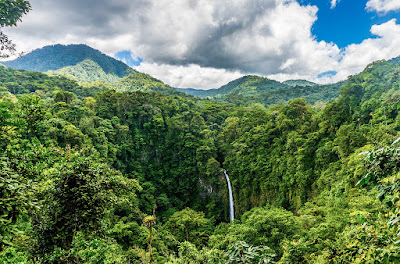Costa Rica is remarkable in many ways. It's a stable democracy in an unstable region. It abolished its army in 1949. It protects 25 percent of the country as national parks or other conservation areas--the highest percentage in the world. It has a 98 percent literacy rate, a universal healthcare system, and a thriving high-tech economic sector. Renewable energy, mostly from hydropower, meets close to 100 percent of the country's electricity needs.
Now, to put the icing on the cake, Costa Rica is determined to be the first country to achieve total freedom from fossil fuels by powering its transportation sector with renewables within a few years.
Recently elected president Carlos Alvarado ran on a platform that set the goal of decarbonizing transport by 2021, the country's 200th anniversary of independence. “When we reach 200 years of independent life," he proclaimed, "we will take Costa Rica forward and celebrate … that we’ve removed gasoline and diesel from our transportation.”
It may not be possible to reach that lofty goal in just three years. However, even setting that as a national goal is an impressive step, and given Costa Rica's stellar history with respect to the environment and the quality of life of its citizens, it may well be the first country to achieve it. Hopefully, given that from 15 to 30 percent of climate destabilizing greenhouse gas emissions worldwide come from transportation, it will not be the last.
La Fortuna waterfall, Costa Rica
Credit: Boris G
Now, to put the icing on the cake, Costa Rica is determined to be the first country to achieve total freedom from fossil fuels by powering its transportation sector with renewables within a few years.
Recently elected president Carlos Alvarado ran on a platform that set the goal of decarbonizing transport by 2021, the country's 200th anniversary of independence. “When we reach 200 years of independent life," he proclaimed, "we will take Costa Rica forward and celebrate … that we’ve removed gasoline and diesel from our transportation.”
It may not be possible to reach that lofty goal in just three years. However, even setting that as a national goal is an impressive step, and given Costa Rica's stellar history with respect to the environment and the quality of life of its citizens, it may well be the first country to achieve it. Hopefully, given that from 15 to 30 percent of climate destabilizing greenhouse gas emissions worldwide come from transportation, it will not be the last.










